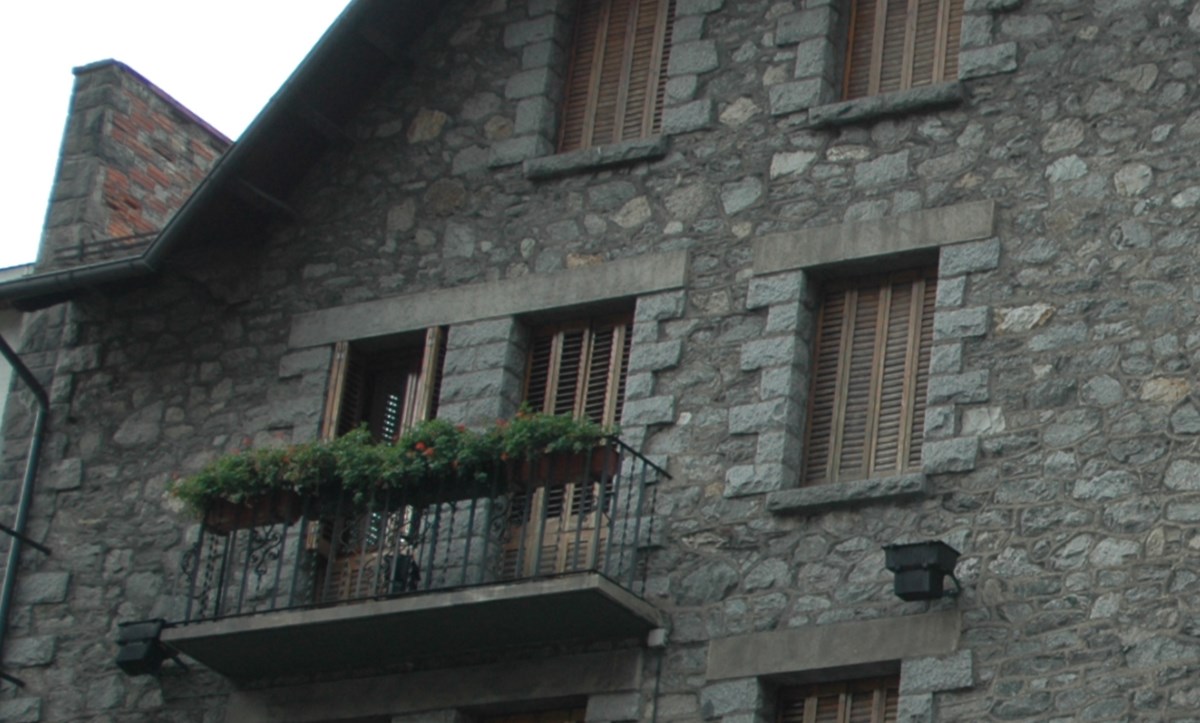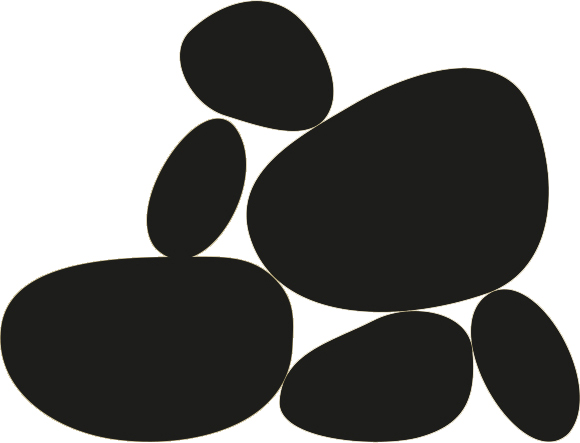Projects

Together with the Comú of Andorra la Vella, in 2007 an architecture of granite itinerary was created in Andorra la Vella, with the aim of seeing the characteristics of this architectural current and its importance in the Andorran context.
Granite architecture is an architectural current which began in the 1930s and lasted until the 1960s. This current brought a change in building techniques. Styles moved from houses built of stone and subsequently stuccoed, to houses in which the stone (granite) took on a leading role: it was left visible and became a decorative element.
The itinerary starts next to Plaça Príncep Benlloch and runs through different streets of the capital. It consists of ten stops with explanatory panels showing various buildings that belong to this architectural trend:
| Stop 1 | Edifici Xavier Maestre | Granite architecture is an architectural current which began in the 1930s and lasted until the 1960s. This current brought a change in building techniques. Styles moved from houses built of stone and subsequently stuccoed, to houses in which the stone (granite) took on a leading role: it was left visible and became a decorative element. Granite architecture in Andorra was influenced by Catalan new century styles, a current which succeeded modernism in Catalonia. |
| Stop 2 | Casa Serola | The expansion of granite architecture would not have been possible without the many stonemasons of Spanish origin who came to Andorra, mostly from Andalusia and Galicia, to build the FHASA hydroelectric power station (now FEDA). Some stayed in Andorra, and others came later, to share in the large building boom in the country. |
| Stop 3 | Plaça Guillemó | The Plaça Guillemó, called “de les Arcades”, was conceived by Bartomeu Rebés Duran, owner of the land. A draughtsman by training, he laid out here the fi rst example of good town planning in Andorra la Vella, in the granite architecture style. The perimeter of the building was capped by a 40º cornice, a perimeter porch was set on the ground fl oor and balconies could be constructed on the façades. In 1961, the architect Jordi Masgrau Boschmonar began to give form to the whole assembly in the construction of the fi rst building with a covered way. |
| Stop 4 | Casa Isern | In this itinerary we are using the term “granite architecture”, which is how the architectural current was described. It should be said, however, that geologically speaking the rock used is granodiorite. Granodiorite is a plutonic magmatic rock composed of quartz (grey grains), alkaline feldspar and plagioclase (white grains) and biotite (black grains). It is thought that the granodiorite found in Andorra was formed around 305 million years ago, at a temperature of around 550 ºC and at a pressure of some 2.5 kb. |
| Stop 5 | Xalet Arajol | Granite architecture is characterised by the use of granite ashlars. The granite is not placed uncut as was done before, but is given a specific shape and becomes a decorative element in the whole of the façade or at the corners and openings. Granite ashlars are cut square, as rectangles, rhomboids or honeycomb (the most typical and representative). This last shape can be seen nearby, behind the chalet, up the street, on the building which houses a transformer. |
| Stop 6 | Casa Felipó | The development of granite architecture in Andorra is the result, among other factors, of the availability of this rock. A large part of the Andorran territory is formed of granodiorites (called granites in this itinerary) belonging to the Andorra-Montlluís batholite. This rock was formed during the late Carboniferous time, and it is believed to be 305 million years old. Several quarries supplied the stonemasons with granite; the most important was the one in Santa Coloma. |
| Stop 7 | Casa Nyerro | Granite architecture expanded on both sides of the Pyrenees: in La Seu d’Urgell, Ax-Les-Thermes, Núria and La Molina. It is in Andorra, however, where it shows to best effect. This type of architecture is a reflection of the changes which took place in the Principality, both socially and economically, starting from the 1930s, in shifting from an essentially rural society to a more urban society. |
| Stop 8 | Casa Massip-Dolsa | The social and political situation in Catalonia after the 1930s brought several Catalan architects to work in Andorra, where they left their stamp on the granite architecture. Among these architects were Celestí Gusi, Josep Puig i Cadafalch (Casa Lacruz in Escaldes-Engordany), Adolfo Florensa and Xavier Pla, an Andorran trained in Catalonia. The Massip-Dolsa house was planned by Xavier Pla. |
| Stop 9 | Casa Cassany | In this architectural style, granite is used not only as a simple construction material, but also with a clearly decorative purpose. The granite is used to add decorative forms and elements to the façade to give it personality, always seeking symmetry. This symmetry is well reflected in the building of the Casa Cassany. On the ground fl oor are four semicircular arches, the centre two are large and are fl anked by the two smaller. On the fi rst and second floors, the central openings are in the form of semicircular arches and those at the sides are with plain lintels. On the third floor the pattern is reversed. |
| Stop 10 | Hotel Isard | The start of the 20th century saw the development of a type of elite tourism, lovers of nature and thermal waters. Around this new tourism the first spas in Andorra were opened and the first luxury hotels designed to please the exquisite tastes of these visitors in the new century. Outstanding among them are the Hotel Valira (Escaldes-Engordany), designed by Celestí Gusi, an associate of Puig i Cadafalch, and the majestic Hotel Rosaleda in Encamp, designed by Adolfo Florensa. Also buildings were erected with other uses, such as the FHASA hydroelectric power station (now FEDA), the Radio Andorra broadcasting station (Encamp) and schools such as the antique Meritxell School. |
Credits
|
The granite architecture itinerary is a cultural structure of the Comú of Andorra la Vella. The whole of the scientific part has been carried out by Andorra Research + Innovation. The collaboration of the Area of Inventory and Conservation of the Ministry of Foreign Affairs, Culture and Cooperation when drawing up the granite architecture itinerary in 2007 is gratefully acknowledged. |
 |

 Natàlia Gallego
Natàlia Gallego